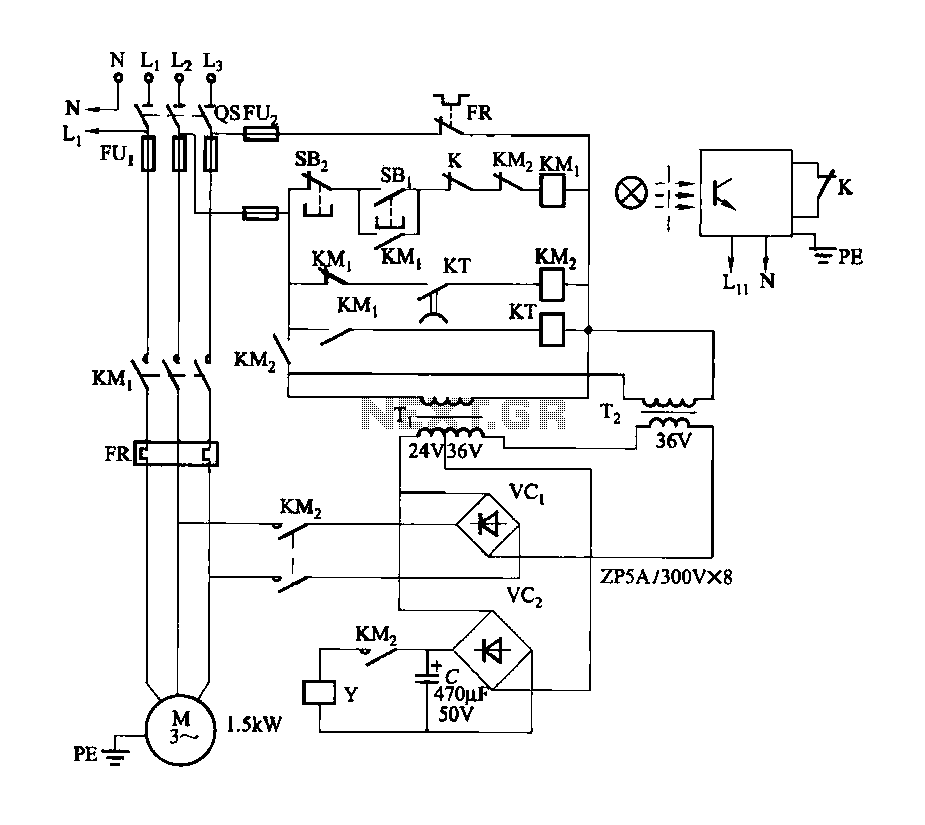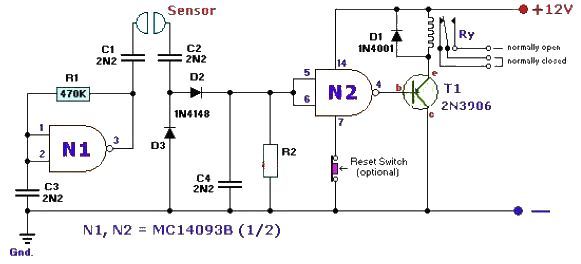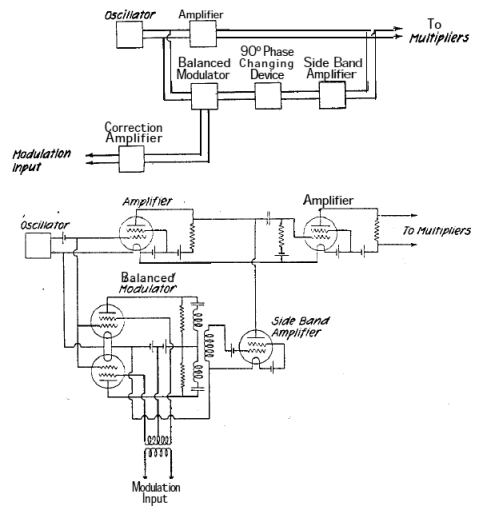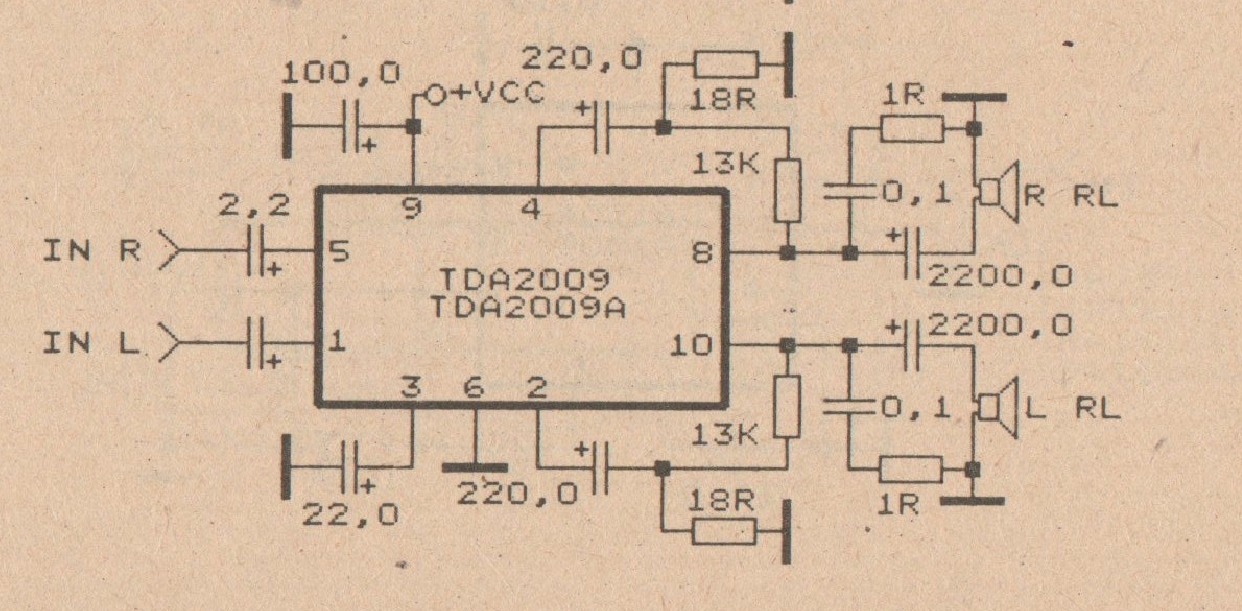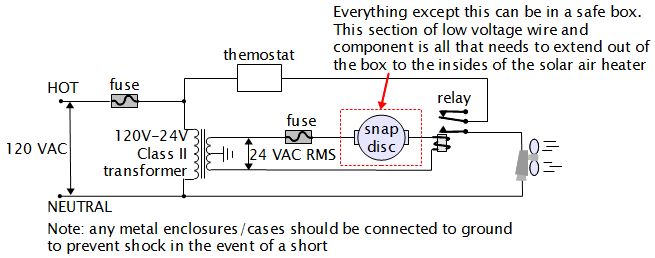
555 simple electronic circuit diagram massage

The circuit is composed of a 555 oscillator and an amplifier driver stage. It includes the 555 timer along with resistors R1, R2, RP1, capacitor C1, and other components forming a multi-harmonic oscillator. The frequency can be adjusted using RP1, following the formula f = 1.44/(R1 + R2 + RP1) C1. The specified frequency range is from 2 Hz to 106 Hz. The low-frequency pulse output from the 555 timer is fed into the input of IC2, a power amplifier that drives a pulse transformer T. This is followed by a connection to a massager metal plate electrode through the CZ jack, allowing for massage therapy on the human body or specific body parts. An LED indicates synchronization with the oscillation frequency. RP1 is used to adjust the frequency, while RP2 adjusts the intensity of the massage. A spiral switch potentiometer is employed in the design.
The circuit utilizes a 555 timer in astable mode to generate a continuous square wave output. This output is critical for applications requiring variable frequency, particularly in massage therapy devices. The resistors R1 and R2, in conjunction with the adjustable potentiometer RP1, determine the timing intervals that set the frequency of oscillation. The capacitor C1 plays a pivotal role in defining the charge and discharge cycles of the timer, further influencing the output frequency.
The output pulse from the 555 timer is typically a low-voltage signal, which is insufficient to drive the massager directly. Therefore, the signal is routed to IC2, a power amplifier that increases the signal strength. The amplified output is then used to energize a pulse transformer, T, which isolates the high-voltage side from the low-voltage control side while stepping up the voltage as necessary for the massager application.
The CZ jack serves as a connection point for the massager's metal plate electrodes, which deliver the therapeutic electrical pulses to the user. The user can feel the effects of the massage through controlled electrical stimulation, which can be adjusted in intensity using RP2. This adjustability allows for personalized treatment based on user preference and comfort levels.
The inclusion of an LED indicator provides visual feedback on the operational status of the circuit, specifically indicating that the oscillator is functioning correctly and that the output frequency is stable. The spiral switch potentiometer allows for easy adjustment of the device settings, enhancing user experience by providing intuitive control over frequency and intensity.
Overall, this circuit design represents an effective solution for creating a variable-frequency massaging device, integrating essential components to ensure functionality, user control, and safety. Circuit as shown by the 555 oscillator and amplifier driver stage composition. 555 and R1, R2, RP1, C1 and other components of a multi-harmonic oscillator whose frequency can b e adjusted by RP1, namely f 1.44/(R1 + R2 + RP1) C1. Parameters given frequency range is shown 2 ~ 106Hz. 555 low-frequency pulse output by anti VT1 adding to the input of IC2, the power amplifier driving pulse transformer T, followed by the level of CZ jack connected massager metal plate electrode, strain on the human body or parts of the massage care. LED instructs the oscillation frequency synchronization light. RP1 to adjust the frequency, RP2 adjust the massage intensity; SA adopts spiral with switch potentiometer.
The circuit utilizes a 555 timer in astable mode to generate a continuous square wave output. This output is critical for applications requiring variable frequency, particularly in massage therapy devices. The resistors R1 and R2, in conjunction with the adjustable potentiometer RP1, determine the timing intervals that set the frequency of oscillation. The capacitor C1 plays a pivotal role in defining the charge and discharge cycles of the timer, further influencing the output frequency.
The output pulse from the 555 timer is typically a low-voltage signal, which is insufficient to drive the massager directly. Therefore, the signal is routed to IC2, a power amplifier that increases the signal strength. The amplified output is then used to energize a pulse transformer, T, which isolates the high-voltage side from the low-voltage control side while stepping up the voltage as necessary for the massager application.
The CZ jack serves as a connection point for the massager's metal plate electrodes, which deliver the therapeutic electrical pulses to the user. The user can feel the effects of the massage through controlled electrical stimulation, which can be adjusted in intensity using RP2. This adjustability allows for personalized treatment based on user preference and comfort levels.
The inclusion of an LED indicator provides visual feedback on the operational status of the circuit, specifically indicating that the oscillator is functioning correctly and that the output frequency is stable. The spiral switch potentiometer allows for easy adjustment of the device settings, enhancing user experience by providing intuitive control over frequency and intensity.
Overall, this circuit design represents an effective solution for creating a variable-frequency massaging device, integrating essential components to ensure functionality, user control, and safety. Circuit as shown by the 555 oscillator and amplifier driver stage composition. 555 and R1, R2, RP1, C1 and other components of a multi-harmonic oscillator whose frequency can b e adjusted by RP1, namely f 1.44/(R1 + R2 + RP1) C1. Parameters given frequency range is shown 2 ~ 106Hz. 555 low-frequency pulse output by anti VT1 adding to the input of IC2, the power amplifier driving pulse transformer T, followed by the level of CZ jack connected massager metal plate electrode, strain on the human body or parts of the massage care. LED instructs the oscillation frequency synchronization light. RP1 to adjust the frequency, RP2 adjust the massage intensity; SA adopts spiral with switch potentiometer.
